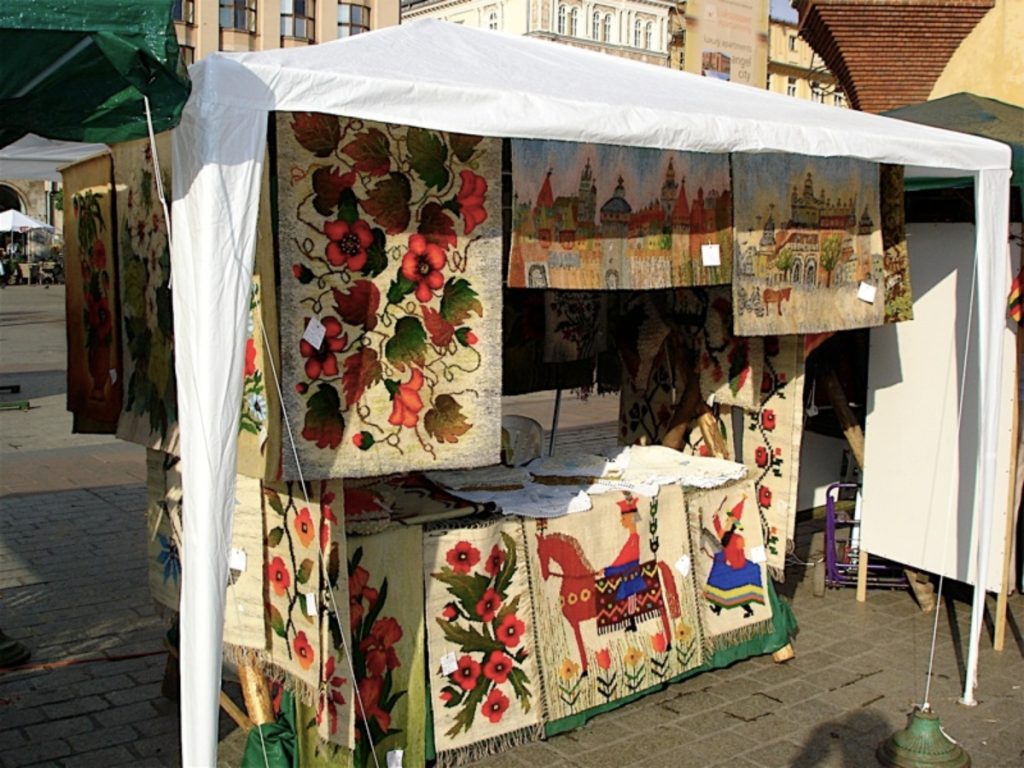Last Updated on October 30, 2024 by Team Ideas24
Side hustles are always great sources of new income. This is more true if you love making things with your hands. DIY craft projects to sell let you earn money by expressing your creativity. You may find a lot of do-it-yourself projects that are entertaining to produce and have a high-profit potential. Whether you have experience or not is irrelevant.
In this article, we’ll explore DIY craft projects to sell, helping you kickstart your side hustle.
Contents
- 1 10 Creative Craft Projects to Sell
- 2 Conclusion
10 Creative Craft Projects to Sell
Beaded Bracelets
Beaded bracelets are a popular and versatile craft, loved for their simplicity and customization. By using basic materials like beads, string, and tools, you can create beautiful pieces to attract various customers.
Simply thread the beads onto the string, create patterns, and secure the ends to make unique bracelets that cater to different styles. This makes beaded bracelets one of the easiest and most enjoyable crafts to sell.
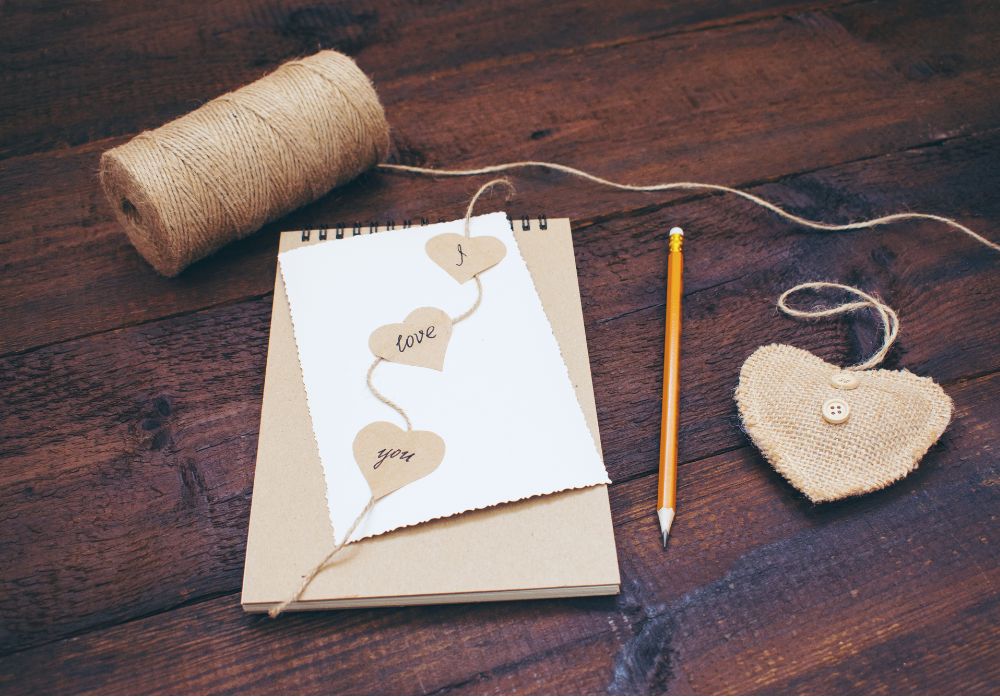
When it comes to selling beaded bracelets, consider your audience and their preferences. Tailoring your designs to match current fashion trends or seasonal colors can make your bracelets more appealing. Pricing should reflect the materials used and the time invested in each piece.
Engaging in social media marketing and participating in craft fairs are excellent ways to reach potential buyers. Beaded bracelets, with their broad appeal and ease of creation, remain a popular choice among craft projects to sell.
However, diversifying your sales channels can significantly expand your audience. Consider selling through well-known online marketplaces like Etsy. These platforms already have a vast community of buyers looking for handmade items, which can drive significant traffic to your crafts.
Don’t overlook the power of local events. Craft fairs and farmers markets provide a personal touch, allowing you to engage with customers face-to-face. These venues are perfect for building relationships and getting immediate feedback on your products.
By combining online strategies with in-person opportunities, you can effectively reach a broader range of customers and grow your craft business.
Resin Earrings
Resin earrings are a popular choice in jewelry making, loved for encapsulating delicate objects like dried flowers and creating unique designs. With endless creative possibilities, these earrings cater to various fashion preferences and are a hit among buyers seeking handcrafted accessories.
Creating resin earrings involves a few essential materials and tools: resin and hardener (usually sold as a kit), molds in the desired earring shapes, protective gloves, and a mixing container. You’ll also need objects to embed within the resin, like flowers, glitter, or small charms, and earring findings for attaching the pieces to hooks or posts.
Begin by mixing the resin and hardener according to the instructions, usually in a well-ventilated area. Pour a thin layer of resin into the molds, place your decorative items into the resin, and then add another layer to encase them fully.
Allow the resin to cure for the recommended time, often 24-48 hours, before demolding and attaching the earring findings. This straightforward process makes resin earrings a fantastic option for craft projects to sell, combining creativity with simplicity.

For those interested in polymer clay jewelry, you’ll find a different set of materials at your disposal. Polymer clay comes in a variety of vibrant colors, perfect for creating bold, geometric shapes. To work with polymer clay, you’ll need some basic tools like a rolling pin designed specifically for clay, cutting tools, and jump rings to assemble your pieces.
Cookie cutters can be a fun way to create consistent shapes, or you might choose to cut freehand for more organic designs.
Handy Tips for Success:
- Resin Jewelry
- The process can be slightly more complex due to the need to mix chemicals. It can also get messy, so prepare your workspace accordingly. Trial and error will help you perfect your technique, particularly in avoiding air bubbles.
- Polymer Clay Jewelry
- These can be a great starter project due to their simplicity and versatility. Once you’ve crafted your designs, consider how the clay can be used beyond jewelry. Think about seasonal decorations like Christmas ornaments or even picture frames.
Resin and polymer clay jewelry involves material expenses but are beginner-friendly with online tutorials. With practice, you can easily make multiple pieces to turn this hobby into a side business. The creative possibilities are endless, whether for personal use or selling.
Painted Terracotta Pots
Painted terracotta pots are a charming and functional option for craft projects. They add color and character to any room, turning planters into works of art. They are popular among plant lovers who want stylish containers for their greenery. The design possibilities are endless, from bright patterns to muted colors.

Essential tools for painting terracotta pots include paintbrushes, acrylic paints, various sized pots, and a sealer. Scrub pots, apply a base coat, then paint your chosen design. Finish with a clear coat. Showcase your work with images and descriptions, and sell at local venues or online.
Macramé Wall Hangings
Macramé wall hangings are popular crafts known for adding a bohemian and handmade vibe to any space. These pieces, made from natural fibers, appeal to those who enjoy rustic and modern aesthetics. Creating one requires basic materials like cord, a hanging rod, and scissors.
By knotting cords using simple techniques, you can make unique designs. Emphasize the handmade quality and versatile appeal of macramé wall hangings when selling them, pricing based on size and complexity.

Expanding Your Crafting Horizons
Beyond macramé, woven and knotted home décor offers a spectrum of opportunities. Consider incorporating weaving techniques to create stunning wall art, soft baskets, or even jewelry. These crafts can be made using a simple wooden frame or a handloom, providing options for all skill levels.
Tips for Crafting Success:
- Beginner Kits
- A beginner weaving kit can cost as little as $30 and includes all supplies needed for a trial project.
- Product Variety
- Think beyond wall hangings to items like placemats, bathmats, or DIY rope bowls. This diversity can cater to a wide audience.
- Trend Awareness
- Stay updated with décor trends, such as boho details and curved shapes, to ensure your products align with current market desires.
Marketing Your Creations
When selling macramé and other woven crafts, emphasize their handmade quality and unique designs. Highlight how these pieces can enhance various home settings, from cozy living rooms to stylish bedrooms. Pricing should reflect the size and complexity of the piece, with smaller items being more affordable and larger ones commanding higher prices.
Effective Marketing Strategies:
- Use well-lit photos to showcase the texture and pattern of your creations.
- Leverage social media, craft markets, and local boutiques to reach a broad audience.
- Collaborate with artisans or explore cultural influences to add authenticity and appeal to your products.
Macramé wall hangings and other woven décor items are a perfect blend of art and utility, making them a standout choice in craft projects to sell. By diversifying your offerings and tapping into current trends, you can capture the interest of a wide range of customers.
Custom Mugs
Custom mugs are ideal for those wanting to sell crafts. They are popular for gifts and personalizing daily routines with various designs like quotes, monograms, and photos. Buyers appreciate their versatility for unique and thoughtful gifts.
To make custom mugs, you’ll need some essential supplies: plain ceramic mugs, porcelain paint pens or markers, and a steady hand. Start by choosing the design you want to apply. You can draw freehand, use stencils, or even trace designs with carbon paper.
Clean the mug thoroughly to ensure the surface is free of oils or dust, which can interfere with the paint adhesion. Once your design is complete, let the mug air dry according to the paint’s instructions, usually 24 hours.
Then, bake the mug in the oven to set the paint, typically at 350°F for 30 minutes. This process ensures the design becomes permanent and dishwasher safe. Custom mugs are straightforward to create, making them a delightful and accessible craft to make and sell.
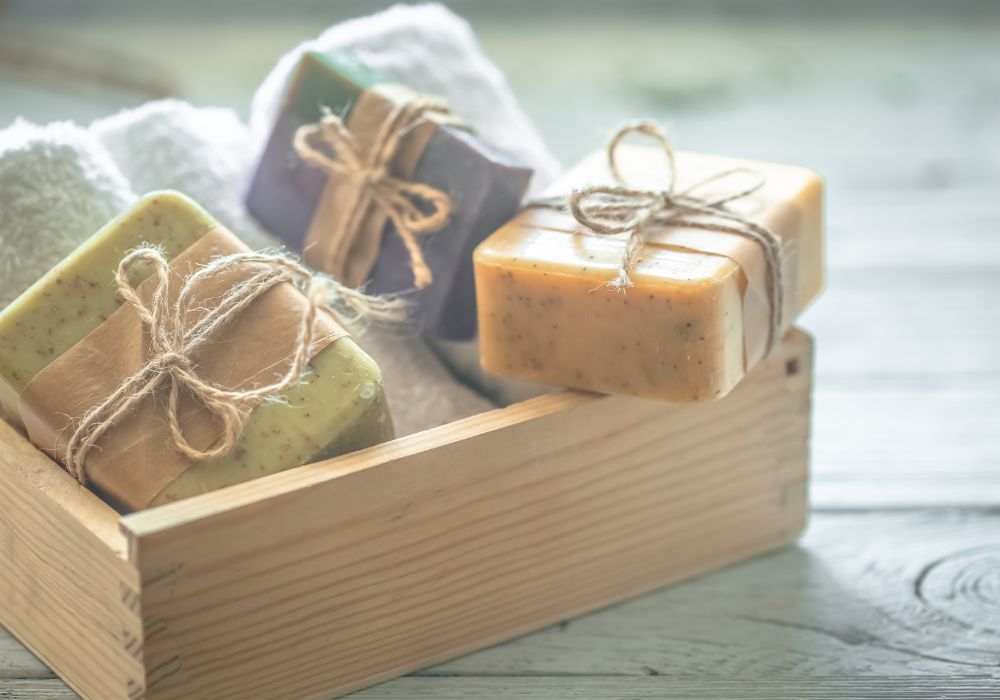
Handmade Soap
Handmade soaps, crafted with natural ingredients, appeal to diverse preferences and skin types. They offer a luxurious and practical option for consumers seeking unique personal care products.
Making handmade soap requires soap base, essential oils, colorants, and molds. Melt soap base, add oils and colorants, then pour into molds to set. After a few hours, remove soap from the molds and it’s ready.
Expanding Your Product Range
In addition to handmade soap, consider experimenting with other easy-to-make beauty products that can expand your offerings. Start with simple items like DIY bath bombs, which are fun to create and popular for their fizz and fragrance. As you gain confidence, explore more complex items like custom nail polishes or soothing lotions.
Creating a range of products allows you to cater to different customer preferences and occasions. Handmade beauty products make excellent gifts, so think about developing themed collections or gift sets to enhance your market appeal.
Marketing and Selling Tips
When selling handmade beauty products like soap, emphasize natural ingredients and artisanal qualities. Showcase benefits like moisturizing oils and exfoliants. Use online platforms, local markets, and social media for promotion. Consider using upcycled materials for packaging to save costs and add uniqueness, such as Mason jars from thrift stores.
Handmade soap, along with a variety of other beauty products, provides versatile and appealing options, making them standout choices among craft projects to sell.

Knitted Scarves
Knitted scarves are timeless items that provide warmth and style to any outfit. They are popular craft projects to sell for people to make and sell due to their versatility in fashion choices, yarns, and colors. From light, ornamental scarves to thick winter wraps, they are always in demand, especially during the winter season.
You will need knitting needles, yarn in the color and texture of your choice, and a yarn needle for finishing to make a scarf. If you’re a novice, start with a basic pattern; if not, choose a more difficult one. Using your selected stitch pattern—garter stitch, ribbing, or stockinette—cast on the necessary number of stitches and start knitting your scarf.
When you get to the length you want, stop knitting and use the yarn needle to weave in any loose ends. Knitted scarves are a popular choice among crafts to manufacture and sell because of their simple technique.
Knitted scarves are classic craft projects to sell. These are always great as gifts for special occasions.
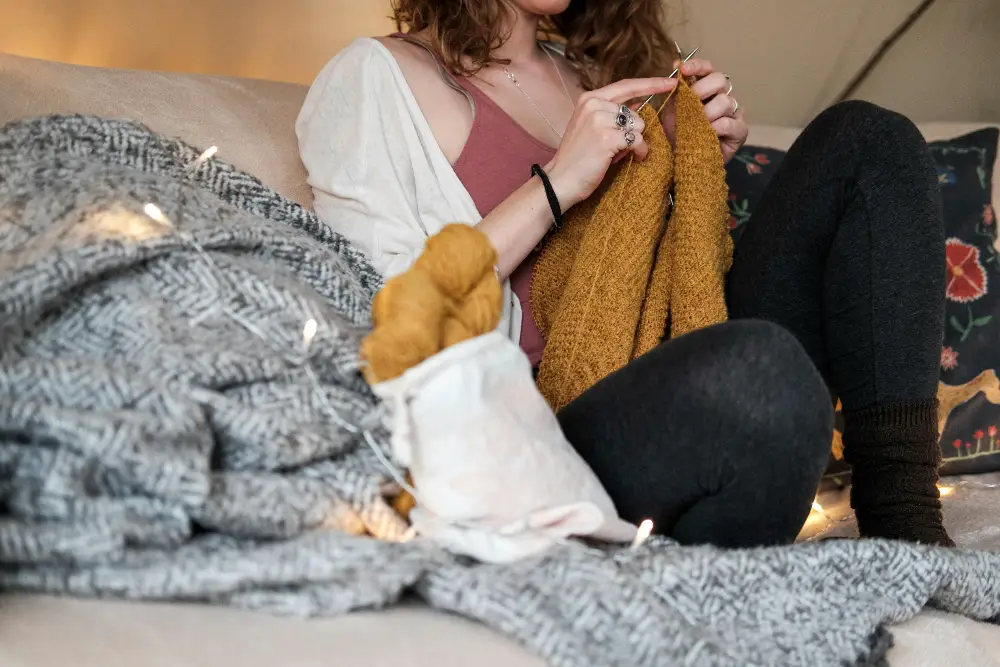
Tote Bags
Tote bags are practical, stylish, and environmentally friendly, making them excellent craft projects to sell. These versatile bags can be used for shopping, carrying books, or as everyday accessories, appealing to a broad audience.
With endless possibilities for customization, from fabric choices to unique designs, tote bags offer a fantastic canvas for creativity. Their popularity continues to grow, especially among eco-conscious consumers looking for reusable alternatives to plastic bags.
To make a tote bag, you’ll need some basic sewing materials: sturdy fabric (like canvas or denim), a sewing machine, thread, scissors, and measuring tools. Start by cutting two rectangular pieces of fabric to your desired size, adding extra seam allowances. Cut two strips for the handles.
Sew the fabric pieces together along the sides and bottom, leaving the top open. Hem the top edge to prevent fraying, then attach the handles securely. You can personalize the tote bag with embellishments like patches, embroidery, or fabric paint. This straightforward process makes tote bags a favorite among craft projects to sell, offering both functionality and the chance to showcase your artistic skills.
When it comes to selling tote bags, highlight their eco-friendly nature and the unique designs that set your creations apart. Emphasize the durability and practicality of your bags, and how they can be used in various ways.
Tote bags are a practical and stylish option, making them standout craft projects to sell, attracting customers who appreciate both form and function in their accessories.
Handmade Greeting Cards
Handmade greeting cards add a personal touch to messages, making them ideal craft projects to sell. Their original designs and effort put into each card make them highly valued for expressing emotions in a meaningful way to both the sender and receiver.
A few basic supplies are needed to make handcrafted greeting cards: blank card stock or pre-cut cards, ornamental sheets, ribbons or stickers, scissors, glue guns, and markers. To begin, fold the card stock to the size and form you like.
Decorate the front of the card using design elements like stickers, stamping images, and calligraphy. Adding dimensional components like foam tape or embossing will enhance its look. Handmade greeting cards are fun to make and sell with this easy method allowing for creativity with various themes and styles.
Pricing considers materials and design complexity. Simple cards may be cheaper than elaborate ones. Presentation is key to attracting customers with eye-catching images and interesting information.
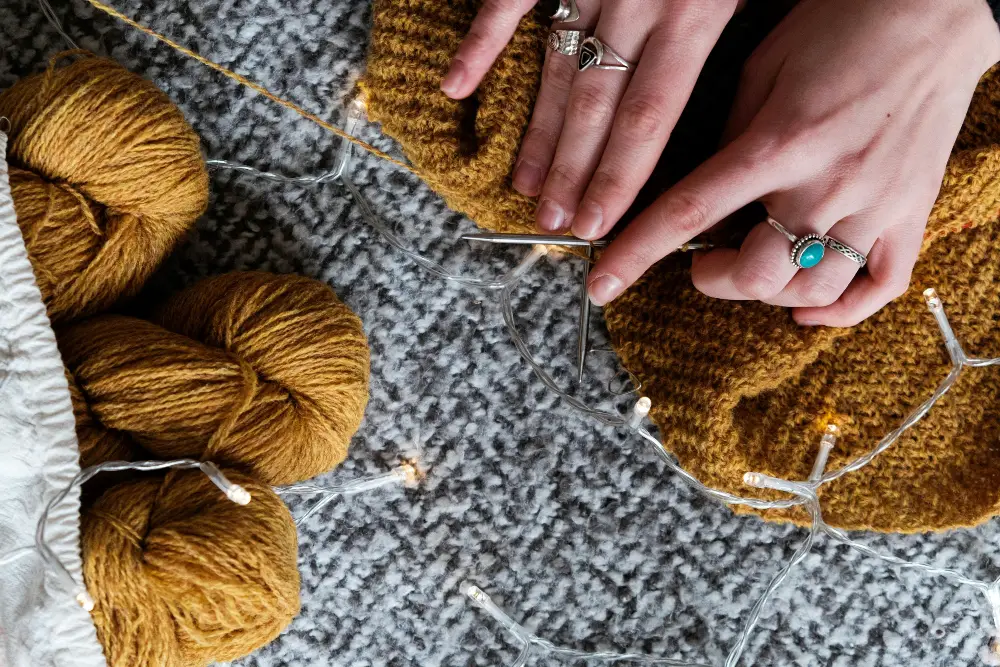
Watercolor Prints
Watercolor prints are a versatile addition to any art collection and are popular among buyers for their delicate and fluid nature. They can showcase abstract designs or detailed landscapes, appealing to a variety of tastes.
Watercolor prints require paper, paints, brushes, and a palette. Sketch the design, paint in layers, and let dry for depth. They’re popular for home decor or gifts. Emphasize handcrafted quality when selling, as well as versatility and originality for various spaces.
Price based on materials, time, and critical factors like fixed costs. Your time and expertise are valuable, too. Ensure these are accounted for in your pricing strategy. Every piece you create is unique, and this uniqueness adds intrinsic value, potentially justifying a higher price point.
Don’t forget about your profit margin. This isn’t just about covering costs—it’s about making your craft business sustainable and rewarding. Finally, conduct market research. Look at competitors selling similar products to ensure your pricing is competitive yet reasonable.
By considering these elements, you’ll be able to set prices that not only reflect your hard work but also appeal to buyers.
Tips for Starting a Craft Business and Selling Products Online
Whether you’re a seasoned crafter or just starting ideas for craft projects to sell, transforming your passion into a thriving craft business is an exciting journey. Here’s how to kickstart your venture:
- Develop Your Brand
- Create a compelling brand that reflects the essence of your crafts. Develop a memorable logo and a consistent color scheme to enhance brand recognition. Your brand should tell a story that resonates with your potential customers.
- Craft a Business Plan
- Outline your business goals and map out how you’ll achieve them. Consider factors like startup costs, pricing strategies, and production timelines. This roadmap will guide your business decisions and set you on the right path.
- Identify Your Target Customer
- Understanding who will buy your crafts is crucial. Conduct market research to identify your ideal customer’s preferences and spending habits. Tailor your products and marketing messages to meet their needs.
- Stay Current with Trends
- Keep an eye on trends in the DIY craft industry. Trend analysis helps you introduce products that align with current consumer interests. Don’t forget to factor in seasonal demand to maximize sales opportunities.
- Choose the Right Sales Channels
- Decide where to sell your crafts. Consider established online marketplaces like Etsy or Amazon Handmade to reach a broad audience. Alternatively, set up your own e-commerce website for more control over your brand and customer interactions.
- Leverage Social Media
- Build a strong presence on platforms like Instagram and Pinterest. Visual content performs well in the craft industry, and social media is a powerful tool for showcasing your work and connecting with potential buyers.
- Attend Craft Fairs and Markets
- Engage with your audience face-to-face by participating in craft fairs and markets. Not only can these events boost your sales, but they also offer valuable networking opportunities and immediate customer feedback.
- Offer Excellent Customer Service
- Impress your customers with timely responses to inquiries, clear communication, and efficient order processing. Happy customers are more likely to return and recommend your business to others.
By following these tips, you’ll be well on your way to successfully launching and operating craft projects to sell that thrives online. Remember, the key to success is dedication, creativity, and an unwavering commitment to quality and customer satisfaction.

Conclusion
Exploring various craft projects to sell can be a great way to turn your creativity into a lucrative business venture. Whether it’s creating beaded bracelets or handmade soaps, each unique item not only meets market demand but also provides a sense of personal fulfillment for the maker.
Getting involved in this activity is a wonderful way to express your artistic side while also connecting with a supportive community of fellow crafters and enthusiastic customers. You’ll find inspiration, share ideas, and build lasting friendships along the way. So why not take the plunge? Join us today and discover the joy of crafting together!
Frequently Asked Questions
- How can you ensure your pricing is competitive?
- To ensure competitive pricing, research others who make and sell crafts. Position your prices within a reasonable range that reflects market trends while highlighting the value of your offerings.
- What is the impact of uniqueness on pricing?
- Unique, one-of-a-kind items possess intrinsic value due to their rarity. This uniqueness can justify a higher price compared to more common goods.
- How does market value influence pricing?
- Your pricing should be set to align with the market value. This balance allows you to cover costs and earn a profit while remaining competitive.
- How should profit margin be factored into pricing?
- Incorporate a profit margin into your pricing. This ensures that your price point not only covers all associated costs but also provides a financial return for your efforts.
- What costs should be considered in pricing?
- When pricing your craft projects to sell, factor in not only the cost of materials but also fixed expenses such as rent and utilities. Additionally, the value of your time and expertise should be included to ensure comprehensive pricing.

